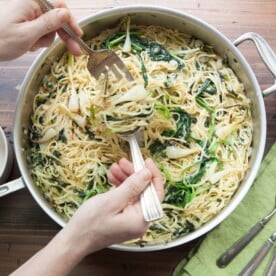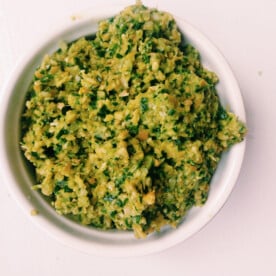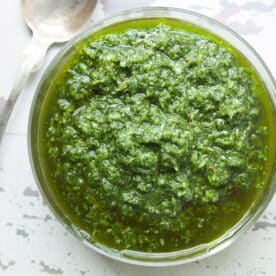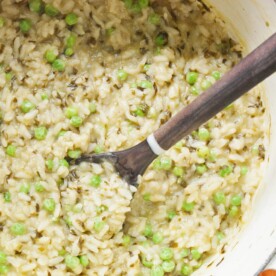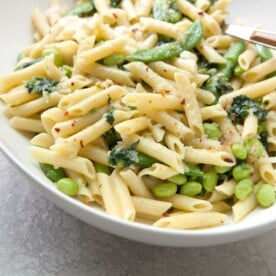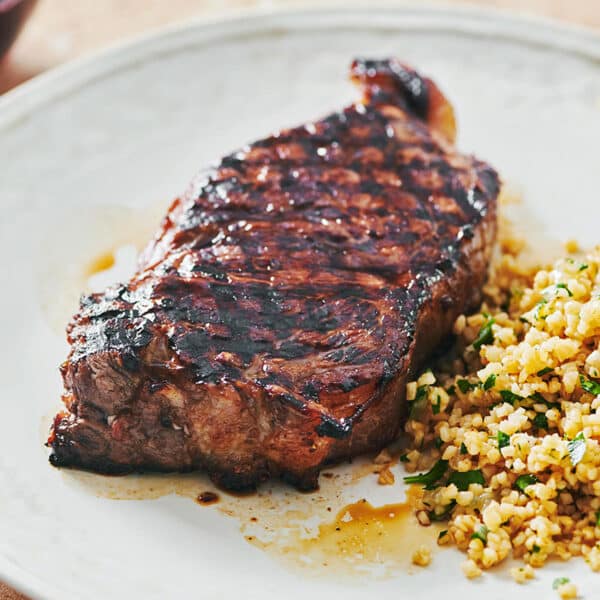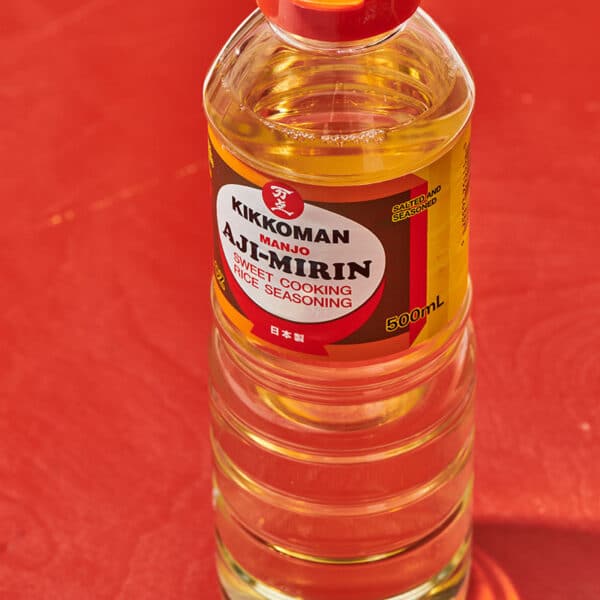How to Cook Ramps
on Mar 22, 2021, Updated Mar 12, 2025
This post may contain affiliate links. Please read our disclosure policy.
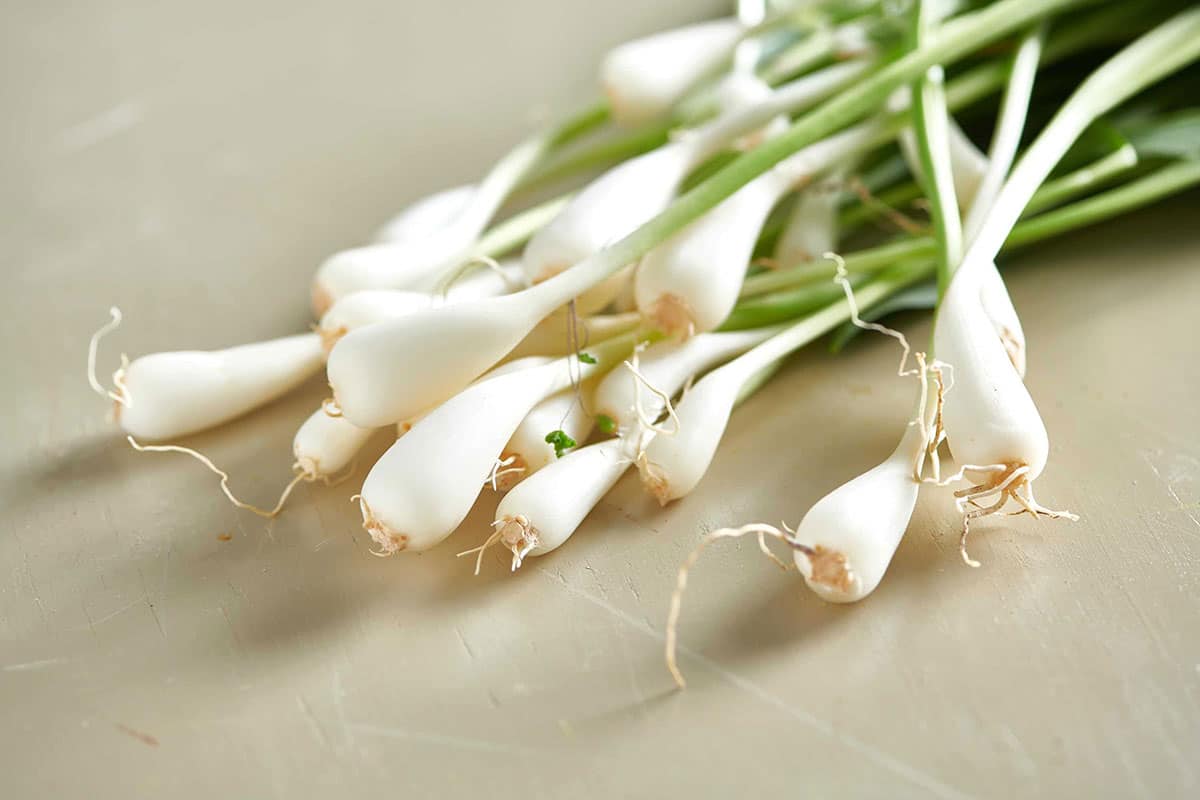
Ramps are leeks or scallions that grow in the wild. They are part of the allium family but very difficult to cultivate, which is part of their appeal and mystique (think truffles and morel mushrooms). Ramps are one of the first spring vegetables to appear in farmers markets and chefs’ menus after a winter of tubers and citrus. They essentially taste like a very garlicky leek or scallion. Below are a bunch of recipes that use ramps and will put those spring ramps to perfect use!
If you aren’t yet familiar with ramps, that’s cool. Ramps are a source of much pleasure for many and some silly snobbery for some. Some people go crazy for them, which means some people think they are overrated. To me, this whole discussion is a little ridiculous. But every spring, many of us look forward to ramp season because these pungent little wild leeks are only around for a short while. I’d rather leave the debating to others and get to cooking them.
By signing up, you agree to our Privacy Policy.
What's In This Post?
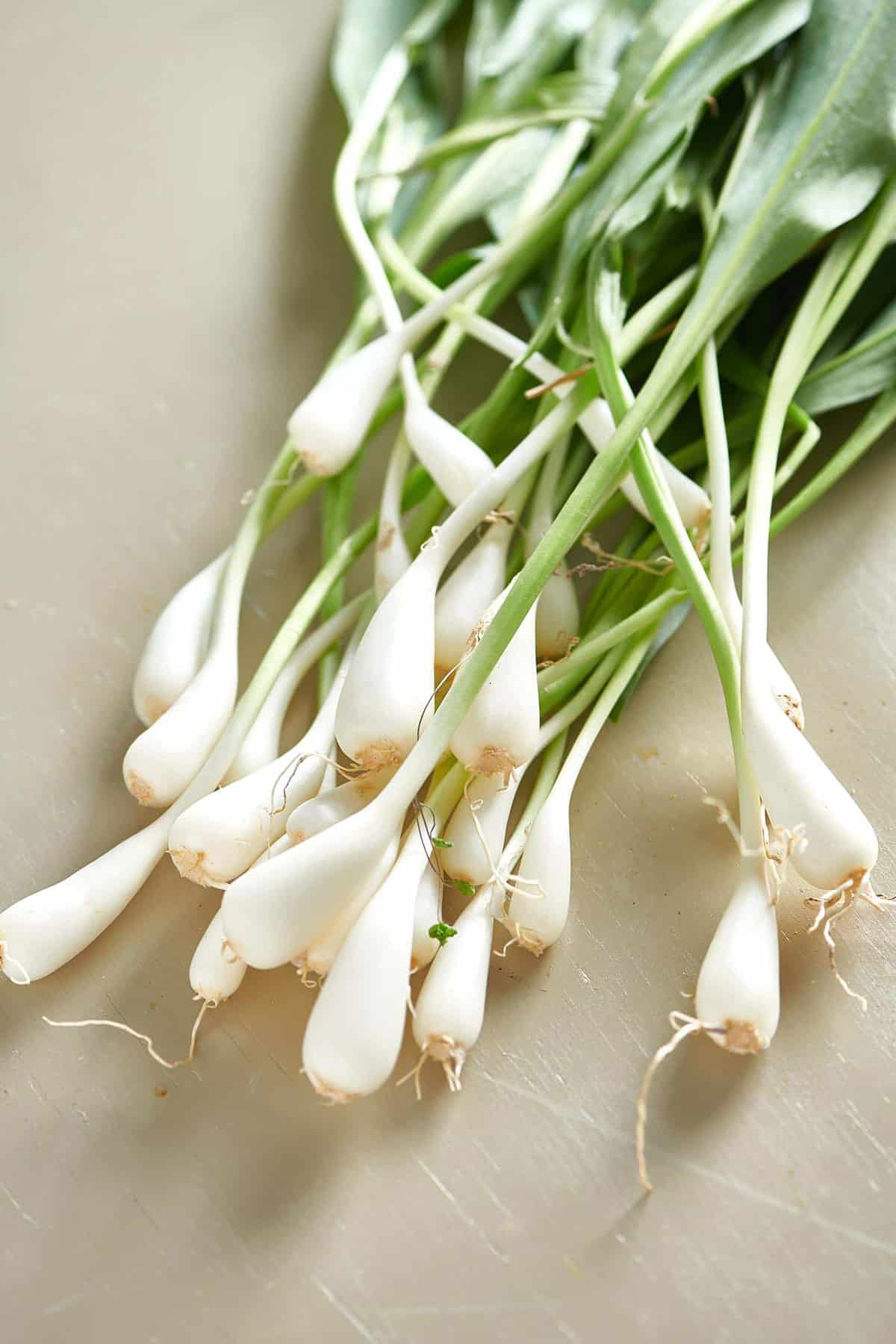
Ramps are essentially wild leeks, wonderful harbingers of spring. See how to harvest them sustainably and use them in all kinds of recipes from risottos to pastas to tapenade.
What Do Ramps Look Like?
Ramps look somewhat like scallions but with a more bulbous bottom. Ramps have nice broad and long green leaves on top of slim white stalks with a plump base. There is sometimes a bit of purple on the slim stalk above the bottom.
Where Do Ramps Grow?
Ramps grow in the Eastern part of North America, up and down the East Coast, and then all the way west to Minnesota and Missouri. Canada and North Carolina kind of border the part of the country where ramps can be found. They tend to grow near wet areas, rivers, marshes, and such, near deciduous trees.
How Do You Harvest or Pick Ramps?
Once you find out where they grow, you’re most of the way there. Don’t be tempted to just try and pull one out of the ground. You really need to dig down around the root and then ease it out of the dirt. This is easier near a source of water where the earth tends to be looser or in the soil after a rain.
If you try and tug it out, you will likely break it and leave the root in the ground. Some say — ok, that replenishes the ramps for the next year, but I think of harvesting responsibly and getting the whole shebang out of the ground.
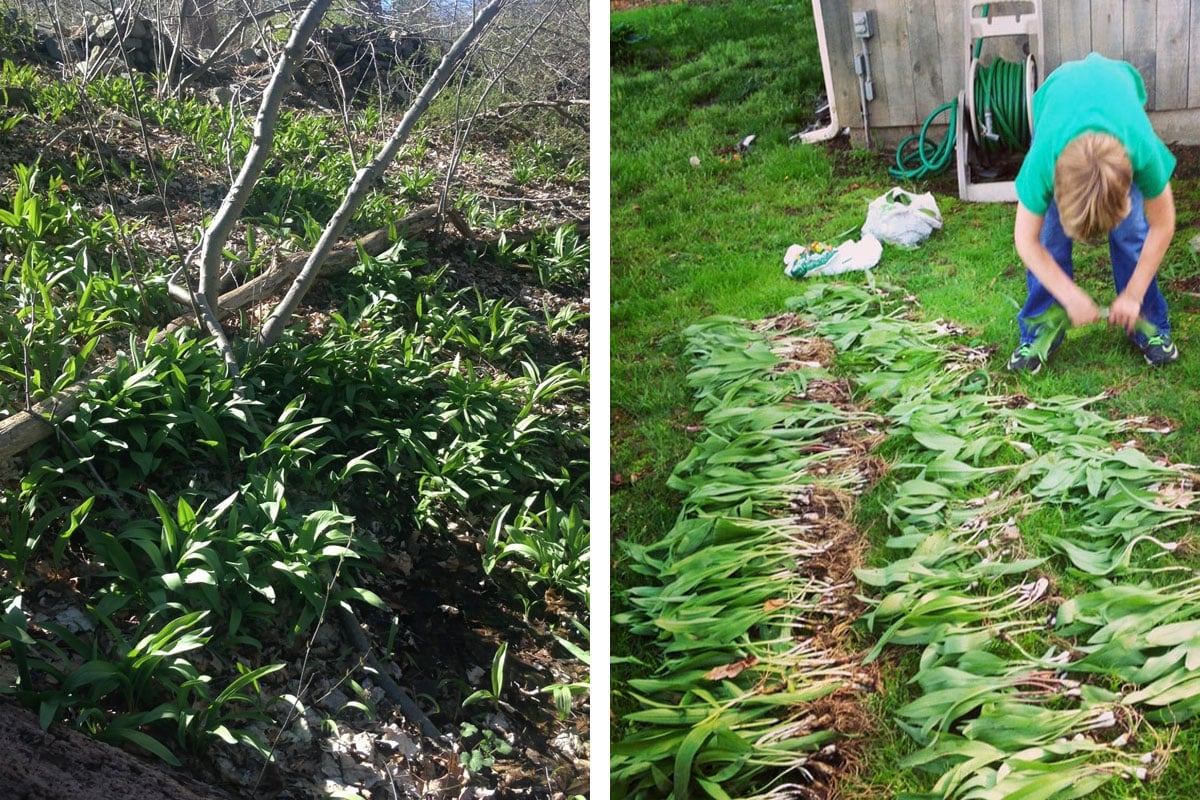
How to Clean Ramps
Because ramps grow underground, the bulbs tend to trap a lot of dirt, especially at the root end. They need to be rinsed very thoroughly in cold water to remove all of the dirt. You’ll need to use your hands to dislodge the clumps of dirt caught in the roots of the ramp.
You can also submerge them in a sink or large bowl of cold water and keep swishing them around until all of the dirt is removed. Give them a final rinse to remove any last bits of dirt, grit, and sand before trimming off the hairy roots at the bottom and using them in your recipe.
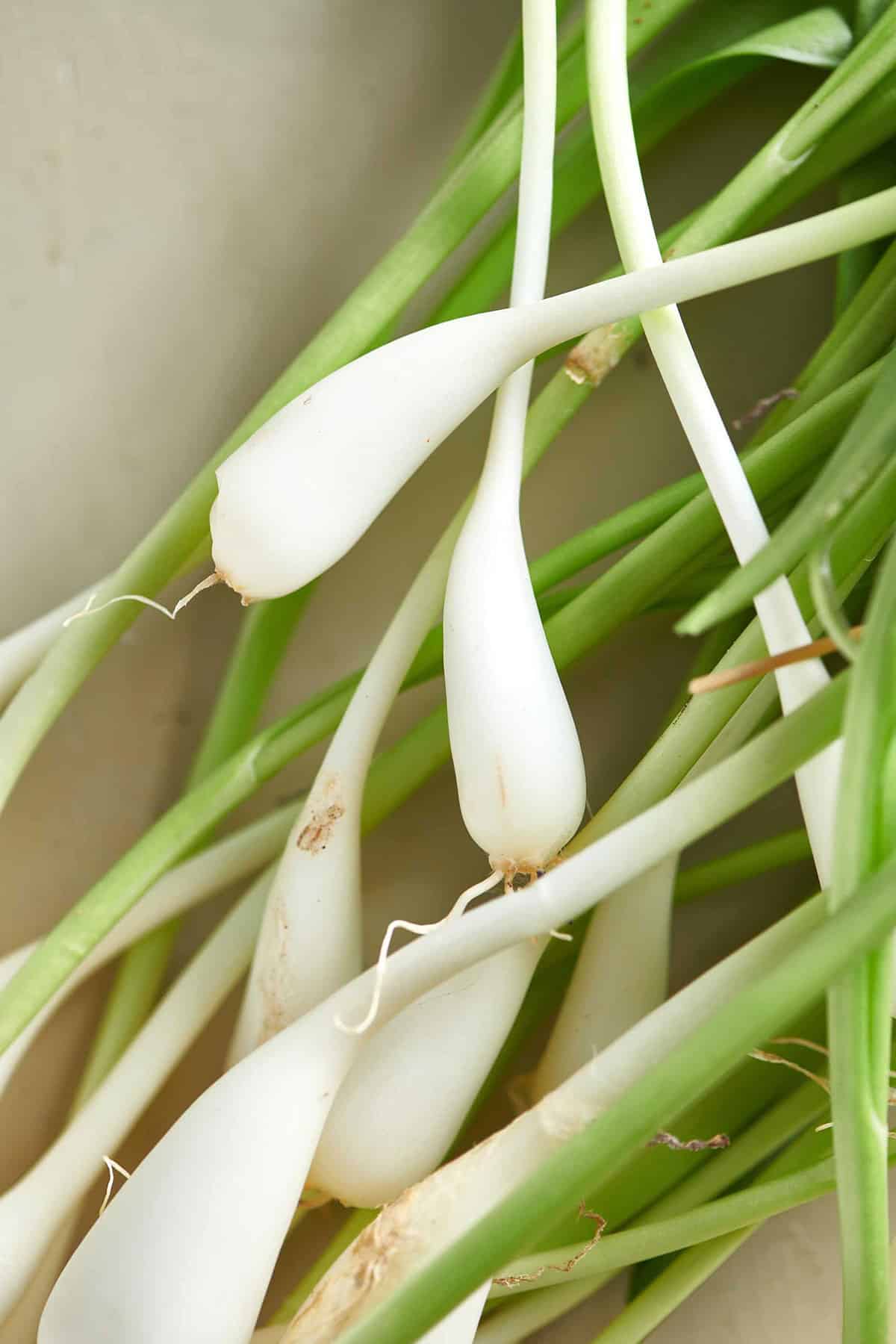
Ramp Sustainability
Ramp over-harvesting threatens to be a problem, so if you are lucky enough to find them, don’t clean out the whole patch — leave some bulbs behind so they can re-propagate. I personally only take about 5% of what the land near me in Connecticut offers, and every year, there is more and more and more.
Some people advocate for only picking the leaves of the ramps and leaving the roots in the earth. In my experience, the ramps have increased year after year, so I stick to harvesting the whole ramp but taking only a small amount of what’s growing.
How to Cook Ramps
Ramps can be roasted, grilled, sautéed, or uncooked in dishes like salads or pesto. They can be used for ramp risotto and other rice dishes, sauces, pastas and potato dishes, eggs, and on top of crostini, just for a few examples. Use both the white stems and bulbs and the green leaves (the leaves are milder in flavor).
The flavor of ramps is very strong when uncooked, so use judiciously. They can be prepared whole or sliced or chopped, similar to scallions or leeks, or really any member of the onion family.
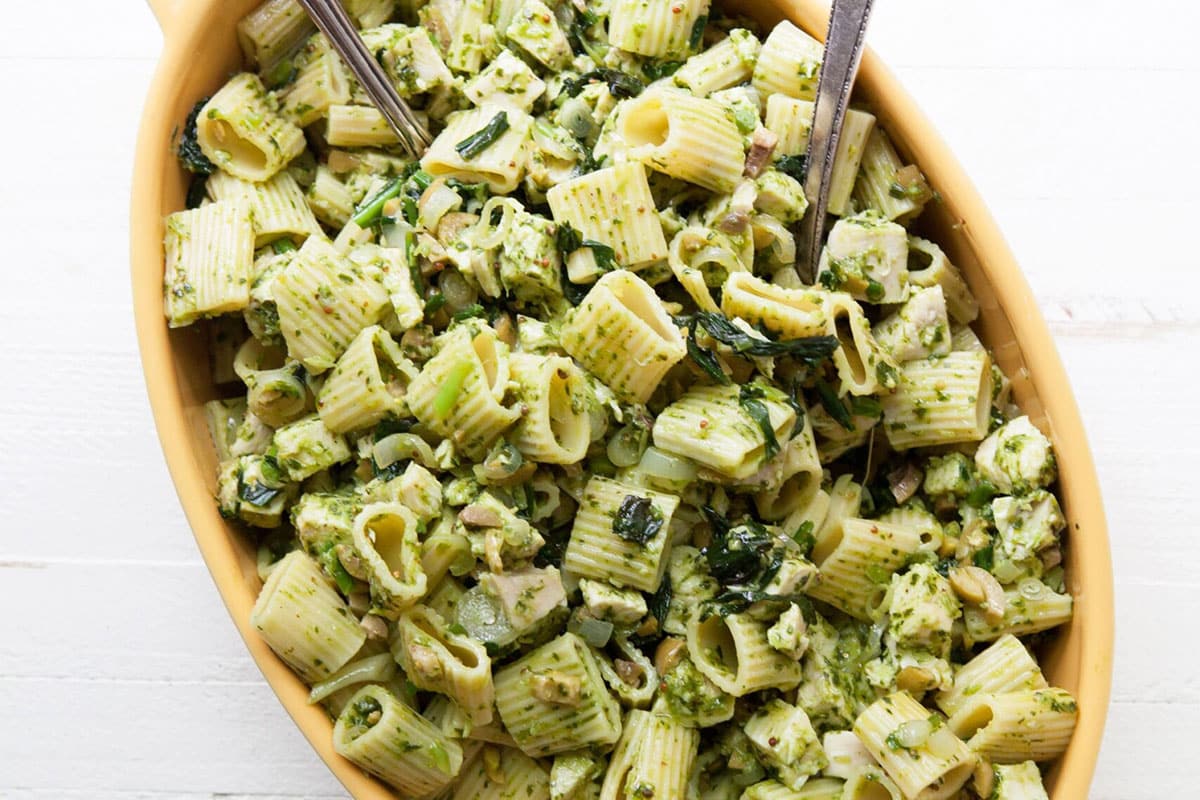
FAQs
You can eat the stems, bulbs, and the leaves, and all are delicious. The ramp leaves are milder than the bulbs.
The flavor of ramps is quite garlicky, though the flavor (like garlic) mellows a bit when cooked.
Ramps are special because they only grow in the wild, in certain areas of the country, and they are only in season for a very brief time in spring.
6 Ramps Recipes to Make Every Spring
So now we know more about ramps. And here are a bunch of recipes to put them to good use!
